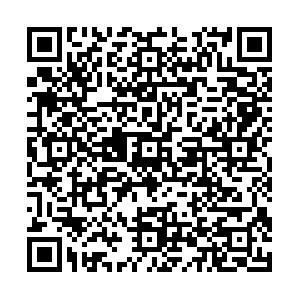Comparative analysis of standardized and non-standardized of myopia prevalence in Beijing students
-
摘要:
目的 比较标化前后北京市各区学生近视检出率的差异,为阐明标化率在基层卫生工作中的重要性和实际意义提供依据。 方法 研究对象来自“2018年北京市学生常见病和健康影响因素监测与干预”项目,采用整群抽样的方法,从北京市16个区的107所中小学校和35所幼儿园中抽取41 029名研究对象,所有研究对象均完成了远视力检查和屈光检测。采用2018—2019学年北京教育事业发展统计概要公布的学生构成作为标准组对北京市各区学生的近视检出率进行标化,比较标化前后各区学生近视检出率的变化。 结果 2018年北京市学生近视检出率为57.3%;幼儿园学生近视检出率为12.1%,小学生为38.4%,初中生为77.2%,普通高中生为88.3%,职业高中生为73.1%。尽管标化前后均以区9学生的近视检出率最高,但检出率差异高达13.8百分点。标化前以区13学生的近视检出率最低,而标化后以区12学生的近视检出率最低。 结论 北京市学生的近视检出率普遍较高,且标化前后各区学生的近视检出率及排序差别较大。在实际工作中,采用标化率可以正确揭示疾病真实的流性特征。 Abstract:Objective To clarify the importance and practical significance of the standardized rate in primary healthcare work by comparing the differences in the prevalence of myopia in districts in Beijing before and after standardization. Methods This study recruited a total of 41 029 students from 107 primary and secondary schools and 35 kindergartens from the 16 districts of Beijing municipality. All participants underwent distance vision and refractive testing. The presence of myopia was defined as naked eye vision of < 5.0 and non-ciliary muscle paralysis under computer optometry with a spherical equivalent objective refractive error of < -0.50 diopters (< -0.50 D). The student composition outlined in the 2018-2019 Beijing Education Development Statistics Summary was used as a standard group to standardize the prevalence of myopia in students from various districts of Beijing. The difference in the pre-and post-standardization rates was used to compare the change in myopia in each district before and after standardization. Results In 2018, the prevalence of myopia in students from Beijing was 57.3%. Stratified by school period, the prevalence of myopia in preschool, primary school, junior high school, ordinary high school, and vocational high school students was 12.1%, 38.4%, 77.2%, 88.3%, and 73.1%, respectively. Although the prevalence of myopia in Daxing District was the highest both before and after standardization, the difference in the prevalence rate was 13.8 percentage points. The prevalence of myopia in Miyun District was the lowest before standardization. However, after standardization, the prevalence of myopia was lowest in Huairou District. Conclusion The prevalence of myopia among Beijing students is generally high. Before and after standardization, the prevalence of myopia in different districts was quite different. The results show that, in practice, the standardized prevalence can reveal the true epidemiological characteristics of specific disease. -
Key words:
- Myopia /
- Prevalence /
- Statistics /
- Students
-
表 1 标化前北京市不同学段各区域学生近视检出率
Table 1. Interregional comparison of myopia detection rate among students by different educational stage in Beijing
学段 区1 区2 区3 区4 区5 区6 区7 区8 幼儿园 164(16.5) 169(10.1) 178(15.2) 310(6.8) 160(15.6) 186(10.8) 161(8.7) 236(12.3) 小学 1 103(39.8) 1 150(41.7) 1 024(39.6) 1 685(37.0) 962(42.5) 1 130(40.5) 966(38.7) 1 114(37.7) 初中 508(80.9) 519(80.0) 506(81.2) 843(77.0) 501(79.2) 542(80.1) 519(79.6) 627(84.4) 普通高中 516(92.0) 537(90.9) 498(90.8) 780(89.2) 517(92.1) 550(85.6) 259(86.5) 288(89.2) 职业高中 189(85.7) 74(78.4) 262(71.0) 712(77.0) 200(73.0) 247(76.1) 84(67.9) 254(70.1) 合计 2 480(61.0) 2 449(59.5) 2 468(60.0) 4 330(58.6) 2 340(62.1) 2 655(59.2) 1 989(54.4) 2 519(56.1) 学段 区9 区10 区11 区12 区13 区14 区15 区16 幼儿园 165(6.7) 172(13.4) 159(15.1) 160(11.3) 185(3.8) 179(14.5) 168(7.1) 184(29.9) 小学 1 186(45.9) 1 162(42.1) 960(41.8) 1 108(31.9) 1 026(28.3) 1 087(34.3) 1 084(33.6) 1 064(38.8) 初中 978(85.1) 567(78.3) 817(72.1) 485(63.1) 504(69.6) 596(67.3) 517(78.9) 532(74.2) 普通高中 979(88.0) 307(89.9) 257(85.6) 510(82.5) 277(84.8) 354(87.3) 248(84.3) 282(88.7) 职业高中 318(76.4) — 184(75.0) — 254(74.0) 263(71.5) 250(62.4) 271(62.4) 合计 3 626(68.7) 2 208(55.8) 2 377(57.7) 2 263(48.6) 2 246(47.7) 2 479(52.3) 2 267(50.7) 2 333(55.0) 注:“—”表示无数据;()内数字为检出率/%。 -
[1] 董彦会, 刘慧彬, 王政和, 等. 中国2005—2014年7~18岁汉族儿童青少年近视现状和增长速度趋势分析[J]. 中华流行病学杂志, 2017, 38(5): 583-587. doi: 10.3760/cma.j.issn.0254-6450.2017.05.005DONG Y H, LIU H B, WANG Z H, et al. Prevalence of myopia and in crease trend in children and adolescents aged 7-18 years in Han ethnic group in China 2005-2014[J]. Chin J Epidemiol, 2017, 38(5): 583-587. doi: 10.3760/cma.j.issn.0254-6450.2017.05.005 [2] 疾病预防控制局. 国家卫生健康委办公厅教育部办公厅财政部办公厅关于开展2018年儿童青少年近视调查工作的通知[EB/OL]. [2020-10-22]. http://www.nhc.gov.cn/jkj/s5898bm/201810/08e2b45092d346a8a8c960d3e3d98b62.shtml.Bureau for Disease Control and Prevention. Notice of the General office of the Mational Health Commission General office of the Ministry of Education, General offiice of the Ministry of Fance n the Survey of Myopia in Children and Adolescents in 2018[EB/OL]. [2020-10-22]. http://www.nhc.gov.cn/jkj/s5898bm/201810/08e2b45092d346a8a8c960d3e3d98b62.shtml. [3] 疾病预防控制局. 国家卫生健康委办公厅关于印发儿童青少年近视防控适宜技术指南的通知[EB/OL]. [2019-12-15]. http://www.nhc.gov.cn/jkj/s5898bm/201910/c475e0bd2de444379402f157523f03fe.shtml.Bureau for Disease Control and Prevention. Notice of the General office of the Mational Health Commission on the issuance of appropriate technical guidelines for the Prevention and control of myopia in children and adolescents[EB/OL]. [2019-12-15]. http://www.nhc.gov.cn/jkj/s5898bm/201910/c475e0bd2de444379402f157523f03fe.shtml. [4] 北京市教育委员会. 2019—2020学年度北京教育事业发展统计概况[EB/OL]. [2019-08-10]. http://jw.beijing.gov.cn/xxgk/zfxxgkml/zwjyjfzx/202003/t20200325_1734103.html.Beijing Municipal Commission of Education Statistics on the development of education in Beijin in the 2019-2020 acdemic year[EB/OL]. [2019-08-10]. http://jw.beijing.gov.cn/xxgk/zfxxgkml/zwjyjfzx/202003/t20200325_1734103.html. [5] YU L, LI Z K, GAO J R, et al. Epidemiology, genetics and treatments for myopia[J]. Int J Ophthalmol, 2011, 4(6): 658-669. http://www.ncbi.nlm.nih.gov/pmc/articles/PMC3340784/ [6] JOBKE S, KASTEN E, VORWERK C. The prevalence rates of refractive errors among children, adolescents, and adults in Germany[J]. Clin Ophthalmol, 2008, 2(3): 601-607. http://europepmc.org/articles/PMC2694012/ [7] VITALE S, SPERDUTO R D, FERRIS F L, et al. Increased prevalence of myopia in the United States between 1971-1972 and 1999-2004[J]. Arch Ophthalmol, 2009, 127(12): 1632-1639. doi: 10.1001/archophthalmol.2009.303 [8] 刘鹏飞, 肖林, 陆志敏, 等. 小学生近视筛查中常用指标的准确性比较[J]. 眼科, 2012, 21(5): 327-330. doi: 10.3760/cma.j.issn.1673-5803.2012.05.009LIU P F, XIAO L, LU Z M, et al. Comparicon of the effecticeness of common visual paramters ofr myopia screening in school-age sample[J]. Ophtalmol Chin, 201221(5): 327-330. doi: 10.3760/cma.j.issn.1673-5803.2012.05.009 [9] 郭建玲, 黄学林, 余凤慈, 等. 佛山市学龄前儿童近视眼流行病学调查及相关因素分析[J]. 国际眼科杂志, 2010, 10(6): 1191-1192. doi: 10.3969/j.issn.1672-5123.2010.06.060GUO J L, HUANG X L, YU F C, et al. Epiderniological Survey of Preschool children with myopia in for shan and the analysis of related factors[J]. Int Eye Sci, 2010, 10(6): 1191-1192. doi: 10.3969/j.issn.1672-5123.2010.06.060 [10] 徐娴, 刘晓, 刘恩赐, 等. 阳江市学龄前儿童近视流行病学调查及相关因素分析[J]. 中国现代医生, 2008, 46(33): 111-112. doi: 10.3969/j.issn.1673-9701.2008.33.058XU X, LIU X, LIU E C, et al. Epiderniological investigation and related factors analysis of myopia in preschoolers in Yangjiang City[J]. Chin Modern Doctor, 2008, 46(33): 111-112. doi: 10.3969/j.issn.1673-9701.2008.33.058 [11] 王望晓. 东阳市2016年学龄前儿童视力发育的流行病学调查[J]. 中国乡村医药, 2019, 26(3): 58-59. https://www.cnki.com.cn/Article/CJFDTOTAL-XCYY201903038.htmWANG W X. Epiderniological Survey on visual developmentof Preschoolers in Songyang city in 2016[J]. Chin J Rural Med Pharm, 2019, 26(3): 58-59. https://www.cnki.com.cn/Article/CJFDTOTAL-XCYY201903038.htm [12] 李良, 徐建方, 路瑛丽, 等. 户外活动和体育锻炼防控儿童青少年近视的研究进展[J]. 中国体育科技, 2019, 4(55): 5-15. https://www.cnki.com.cn/Article/CJFDTOTAL-ZGTY201904001.htmLI L, XU J F, LU Y L, et al. Research Progress ion Myopia Prevention and Control by Promoting Outdoor Activity and Physical Exercise in Children and Adolescents[J]. Chin Sport Sci Technol, 2019, 4(55): 5-15. https://www.cnki.com.cn/Article/CJFDTOTAL-ZGTY201904001.htm -

 点击查看大图
点击查看大图
表(1)
计量
- 文章访问数: 704
- HTML全文浏览量: 406
- PDF下载量: 55
- 被引次数: 0





 下载:
下载: